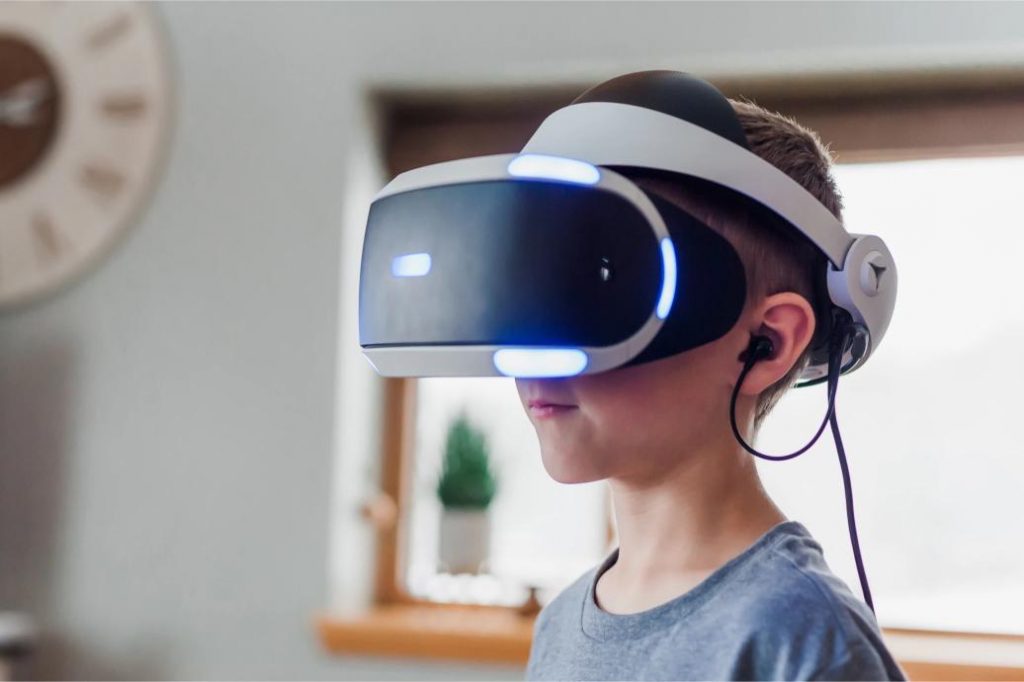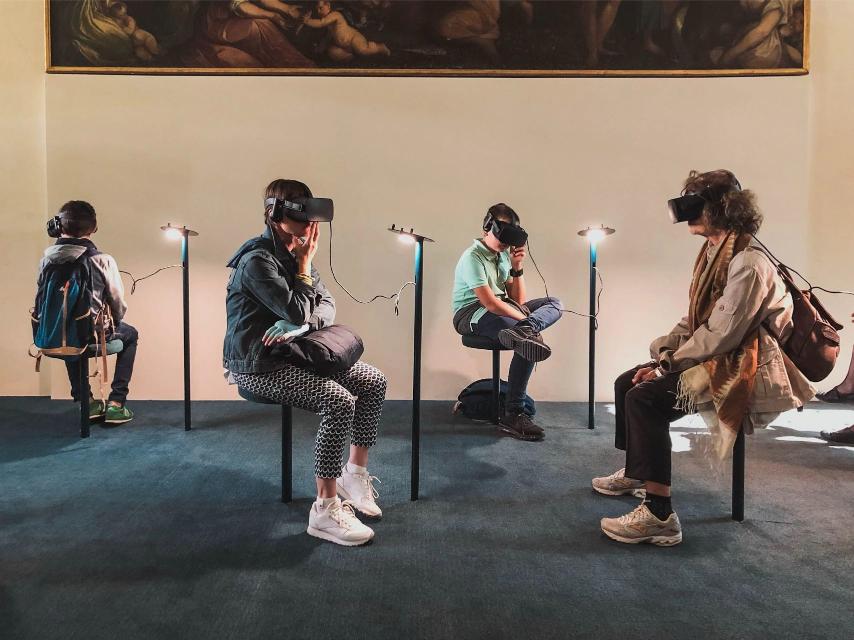- AR authoring tools, such as ZapWorks, Lens Studio, and Reality Composer, enable designers and content creators to produce AR experiences efficiently.
- 3D modelling software, tracking and recognition software, and programming languages like Unity C#, JavaScript, Swift/Objective-C, Kotlin/Java, and C++ are used in AR development.
- The AR development process includes planning and conceptualization, design and prototyping, coding and implementation, testing and quality assurance, and deployment and maintenance.
The process of developing digital experiences that superimpose virtual features on the actual world is known as augmented reality, or AR development. Augmented reality (AR) technology combines the user’s perception of the real world with computer-generated visuals, sounds, or other data. Creating and developing AR applications entails incorporating interactive and immersive digital content to improve the user’s sense of reality. Programming languages, tools, and AR software development kits (SDKs) are used by developers to create AR apps for a range of devices, including tablets, smartphones, smart glasses, and heads-up displays. AR development offers customers immersive experiences that smoothly merge the virtual and physical worlds. Applications include gaming, education, retail, marketing, training, healthcare, and entertainment.
Components of AR development
AR development involves the use of hardware and devices such as smartphones and tablets, smart glasses and headsets, heads-up displays (HUDs), wearable devices, and AR software development kits (SDKs). These devices enable users to interact with AR content overlaid on their device’s camera view, provide hands-free interaction and spatial awareness, and enhance situational awareness. AR authoring tools, such as ZapWorks, Lens Studio, and Reality Composer, enable designers and content creators to produce AR experiences efficiently.
3D modelling software, such as Blender, Maya, and 3ds Max, is used for creating 3D models and assets for AR applications. Tracking and recognition software, like Wikitude, EasyAR, and Vuforia, enhances AR interactivity by recognising real-world objects and triggering digital content.
Programming languages for AR development include Unity C#, JavaScript, Swift and Objective-C, Kotlin and Java, and C++. Unity C# is used for developing AR games and simulations, while JavaScript is commonly used for web-based AR applications. Swift and Objective-C are programming languages for developing AR applications on iOS devices, while Kotlin and Java are languages for Android devices. C++ is an efficient language for low-level programming in AR development and performance optimisation.
Process of AR development
The process of AR development involves several stages, including planning and conceptualization, design and prototyping, coding and implementation, testing and quality assurance, and deployment and maintenance. The planning phase involves defining project goals, conducting market research, creating user stories, establishing a budget, and prototyping low-fidelity prototypes. The design phase involves creating intuitive interfaces, visual design, information architecture, and rapid prototyping. The iterative design process refines the AR experience based on user testing and stakeholder input.
The coding and implementation phase involves choosing appropriate development tools, creating 3D models, animations, and interactions, integrating AR features, optimising performance, and testing across devices. Functional testing ensures the functionality of AR features, while usability testing assesses the user experience. Performance testing evaluates the app’s speed, responsiveness, and stability under different conditions. Compatibility testing ensures consistent performance across multiple devices and operating systems.
Applications of AR development
AR gaming involves immersive gaming experiences that blend virtual elements with real-world environments. Location-based games use geolocation data to create interactive and location-specific gameplay experiences. Multiplayer AR games allow players to interact and compete in augmented reality. Gamified learning uses AR technology to make learning more engaging and interactive. AR game development platforms like Unity, Unreal Engine, and ARKit provide tools for creating rich and interactive experiences.
Also read: When was augmented reality created?
AR education and training involve interactive learning, virtual field trips, training simulations, and language learning. AR tools like Google Expeditions, Zappar, and Classkick offer tools for creating AR educational content and experiences.
AR retail and marketing involve virtual try-ons, augmented shopping experiences, interactive advertising, product visualisation, and marketing platforms like Blippar, Snap Lens Studio, and Shopify AR. AR healthcare applications include medical training simulations, patient education, surgical navigation, rehabilitation and therapy, and health monitoring.
AR navigation and wayfinding involve indoor and outdoor navigation, location-based information, public transportation assistance, and accessibility support. AR wearables and devices provide real-time health data, reminders, and information for better health management.

Challenges and considerations in AR development
AR development faces several challenges, including hardware limitations such as device fragmentation, processing power, display quality, sensor accuracy, and wearable integration. Software complexity involves learning and mastering AR development platforms, SDKs, and programming languages, addressing integration challenges, performance optimisation, testing, and maintenance. User experience involves creating intuitive interfaces, engaging experiences, providing relevant content, and educating users on effective use. Privacy and security concerns must be addressed.
Content creation and integration involve 3D modelling and assets, real-world integration, data integration, content management, and cross-platform compatibility. AR applications should align virtual content with real-world objects, surfaces, and environments, incorporate real-time data, and provide fresh experiences. Cross-platform compatibility ensures AR applications work seamlessly across different devices and platforms.
Also read: What does the mesh do in augmented reality?
Ethical and legal considerations include data privacy regulations, user safety, intellectual property rights, accessibility, and user consent. Compliance with data privacy laws, user safety, and intellectual property rights are crucial for ensuring user safety and usability. Inclusive AR experiences for users with disabilities or impairments are also essential.
Future trends in AR development
Future trends in AR development include enhanced user interactions, spatial computing, AI and machine learning, augmented reality clouds, wearable AR devices, and hybrid reality experiences. Advancements in gesture recognition technology, voice commands, haptic feedback, eye tracking, emotion recognition, spatial computing, and spatial collaboration are being implemented to enhance user experiences.
Spatial computing includes advanced spatial mapping techniques, object recognition, spatial audio, depth sensing, and spatial collaboration. AI algorithms are being used for personalised content recommendations, object detection, scene understanding, dynamic content generation, and AI-powered assistants.
An augmented reality cloud is being developed for enhanced graphics quality, remote collaboration, seamless data sharing, scalability, and real-time updates. Cloud-based AR platforms are being used for remote collaboration, shared experiences, and multi-user interactions in virtual environments.
Wearable AR devices are being developed for more immersive and convenient interactions, such as smart glasses and headsets. Augmented reality contact lenses are being developed for discreet and seamless experiences. AR wearables are being used for healthcare applications, and AR technology is being integrated into fashion and lifestyle accessories. Hybrid reality experiences are being combined with other technologies like virtual reality, sensors, and biometrics for enhanced capabilities and functionality.

